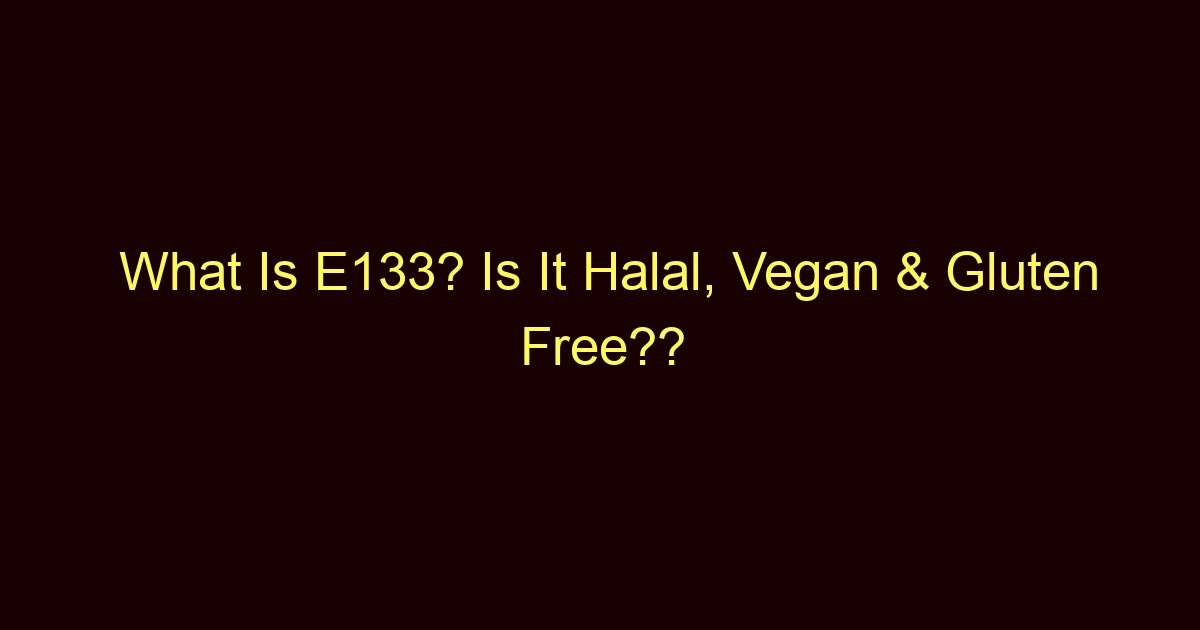In our global food industry, E-numbers have become shorthand for a host of additives, from preservatives to coloring agents. These codes are more than just abstract labels; they tell a story about what we’re consuming and have ignited several debates over health, ethics, and religious dietary practices. Continuing our exploration, let’s dive into the details of E133, often referred to as Brilliant Blue FCF.
What is E133?
E133 is a synthetic blue dye also known by its more colorful name, Brilliant Blue FCF. Found in an array of food products, it’s used to give that visually appealing shade of blue to our sweets, drinks, and even some cosmetics. Given its vibrant color, it’s no surprise that it’s a favorite among food manufacturers aiming to make their products pop on the shelves.
There’s an artistic element to food, and E133 plays its role in that theater, creating hues that nature might not provide in certain foods. But it isn’t just about aesthetics; color can influence our taste perception. Think about it: would you be as enticed by a blue raspberry drink if it was transparent?
However, like many food additives, E133 hasn’t escaped its share of controversy. Over the years, debates have swirled around its potential health effects, leading to rigorous studies and its ban in some countries.
How is E133 Made?
E133 is a derivative of coal tar, although it sounds rather industrial. Its production involves a series of chemical reactions that transform raw materials into the brilliant blue dye we see in various products. Specifically, it’s an anionic dye, which means it has a negative charge, helping it bind to food and remain stable.
The creation of such vibrant, consistent, and stable colors synthetically is a testament to human ingenuity. Nature provides a vast palette, but certain shades might be difficult to obtain or maintain in foods. Hence, synthetic dyes like E133 come into play.
Is E133 Halal?
Yes, E133 or Brilliant Blue FCF is considered Halal. Its synthesis doesn’t involve any animal derivatives, alcohol, insects, or wine. However, due to its synthetic origins, some Islamic scholars and organizations recommend caution and advise checking with specific Halal certification bodies, as there might be variations in interpretation.
Is E133 Vegan?
Yes, E133 is Vegan. Being a synthetic dye derived from coal tar, it doesn’t have any animal products or by-products involved in its creation. However, as always, vegans should be aware of the overall ingredients in a product, as the presence of E133 doesn’t automatically make the entire product vegan.
Is E133 Gluten Free?
Yes, E133 or Brilliant Blue FCF is gluten-free. It doesn’t contain or derive from wheat, barley, rye, or other gluten-rich grains, making it safe for those with celiac disease or gluten sensitivity. Yet, as is the recurring theme, always scrutinize product labels to ensure there aren’t other gluten-containing ingredients.
E133: Is It Safe or Harmful?
The safety of E133 is a mixed bag, with opinions divided based on various studies. Some link it to hyperactivity in children, while others see no direct harm at the consumption levels typically found in food.
Several regulatory bodies, including the European Food Safety Authority (EFSA), have given it a green light, albeit within stipulated limits. However, its usage is banned in countries like Norway, Finland, and France due to health concerns.
As with many food additives, moderation is crucial. While occasional consumption within regulated limits might not pose significant health risks, it’s always wise to be aware and not go overboard with products containing such additives.
Final Thoughts
E133, or Brilliant Blue FCF, illuminates an interesting intersection of science, art, and commerce in our food industry. It showcases how we’ve engineered solutions to meet our aesthetic demands. At the same time, it serves as a reminder that with such innovations come responsibilities: to ensure safety, respect diverse dietary choices, and continuously evaluate the implications of our creations.

